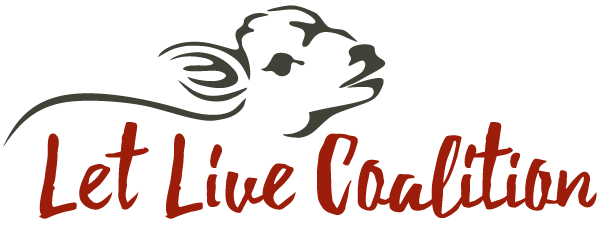Frequently Asked Questions
Why Do You Oppose Humane Slaughter? Shouldn’t Killing be Humane?
Any time consumers advocate for “humane” treatment and slaughter of farmed animals, they confront an unavoidable paradox: the movement to treat farmed animals better is based on the idea that it is wrong to subject them to unnecessary harm; yet, killing animals we have no need to eat constitutes the ultimate act of unnecessary harm.
When we have access to plant-based foods, and a choice between sparing life or taking it, there is nothing remotely humane about rejecting compassion, and choosing violence and death for others just because we like the taste of their flesh, and because they cannot fight back. Might does not equal right.
Too, although proponents position “humane farming/slaughter” as an alternative to factory farming and the horrors of industrial killing, the truth is that small-scale and so-called humane farming/slaughter operations actually perpetuate the worst commercial practices. As historian James McWilliams has written:
“Supporting alternatives to the industrial production of animal products serves the ultimate interest of industrial producers. The decision to eat animal products sourced from small, local, and sustainable farms might seem like a fundamental rejection of big business as usual. It is, however, an implicit but powerful confirmation of the single most critical behavior necessary to the perpetuation of factory farming: eating animals. So long as consumers continue to eat meat, eggs, and dairy — even if they are sourced from small farms practicing the highest welfare and safety standards — they’re providing, however implicitly, an endorsement of the products that big agriculture will always be able to produce more efficiently and cheaply. And thus dominate.”
But Don’t Some People Just Need to Eat Meat?
While the idea that some people “just need meat or animal protein” sells plenty of books and caters to entrenched taste preferences, in terms of the actual nutrients needed, nutritional requirements are not variable within species. Each species has its own specific nutritional requirements, and all members of each species require the exact same nutrients. Therefore the idea that some people “just need meat” is scientifically inaccurate. As nutritional epidemiologist Micaela Karlsen observes in her article, Do Different People Need Radically Different Diets?—
“Human beings are one species; we are all the same animal, with the same digestive physiology. And, as is true of all species, we do not require personalized nutritional programs unless we are dealing with a specific disease or some other very unusual condition… In other words, you’ll be hard pressed to stumble upon horses that do better with some meat in their diet because of their blood type, or bears that need twice the protein intake of other bears. Our species has specific nutritional requirements, and we can meet them by eating whole plant foods in sufficient quantity to maintain healthy body weight, just as other animals do, in their natural environments.”
It is also important to note that a craving is not a need. Learn more at Catching Up With Science: Burying the ‘Humans Need Meat’ Argument
Don’t We Need Animal Agriculture to Feed A Soaring Global Population?
The lead instructor-slaughterer for this workshop, Meredith Leigh, repeatedly justifies DIY/humane slaughter by conflating need with greed, pointing to hunger and scarcity in food insecure communities to justify animal consumption everywhere. “We have hungry people in our country and we’re not going to eat something because we’re afraid to? Or because of regulation? Or because of whatever our culture has deemed normal?”
In reality, farmed animals are highly inefficient converters of calories and require far more crops, land, water, and energy to transform them into food than are required to grow crops to feed humans directly. A recent analysis of global agricultural yields found that better use of existing croplands could feed four billion more people simply by shifting away from growing crops for animal feed and fuel, and instead growing crops for direct human consumption. Reallocating croplands in this way could increase available global food calories by 70 percent.
Shouldn’t We Encourage Small-Scale, Sustainable Farming and Slaughter?
Even with more than 98% of all farmed animals in the U.S. currently being raised by intensive (factory farm) methods — that is, using very little space and land per animal — nearly a third of all the land in the U.S. is devoted to rangeland, pasture, or other grazing lands. With 95 million cattle, we would need, by the most conservative estimates, 250 million acres to convert all U.S. dairy and beef operations to pastured systems. That’s more than 10% of all the land in the U.S.
The increased land use necessary to more “humanely” farm animals also results in even higher emissions of harmful greenhouse gases (GHGs). It’s estimated that grass-fed ruminants such as sheep and cows produce up to four times more methane than their grain-fed counterparts. Because they fatten more slowly on grass than on grain, pastured animals take significantly longer to reach slaughter weight than feedlot animals, emitting more methane and nitrous-oxide along the way.
As the authors of Food-Miles and the Relative Climate Impacts of Food Choices in the United States conclude: “Shifting less than one day per week’s worth of calories from red meat and dairy products to… a vegetable-based diet achieves more GHG reduction than buying all locally sourced food.”
